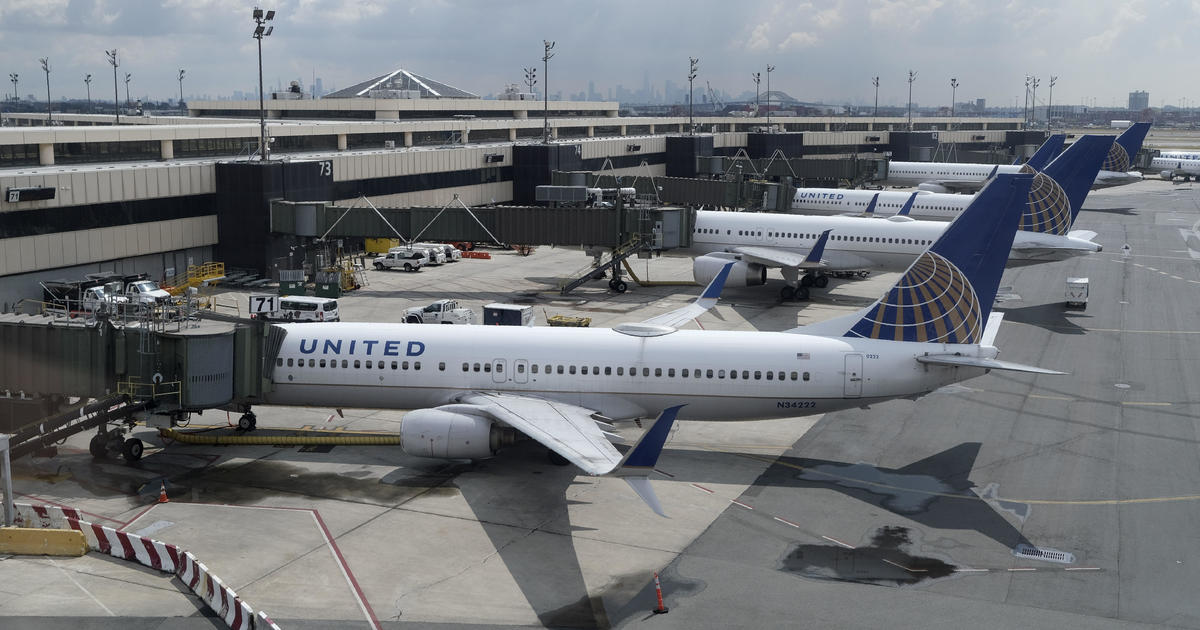The pilot shortage has its roots long before the current crunch. Industry leaders saw it coming more than three years ago — before the pandemic — as the global airline industry predicted a record number of passengers and the need for more planes and pilots over the next 20 years.
Then came the pandemic. Amid lockdowns around the world, airlines parked hundreds of planes. And the major U.S. airlines received massive amounts of federal aid — with the express restriction that they had to fly their schedule, and could not furlough or lay off any employees.
But the airlines were desperate to preserve cash. While they couldn’t lay anyone off until after the aid ran out, they could offer very attractive early retirement and buyout packages to employees across the board.
At first, the airlines expected about 4% of the workforce would accept the offers and leave — but double that took them up on the deal, according to the International Air Transport Association. At Delta, about 17,000 employees, or 20% of its workforce, took buyout packages or early retirement, the company said in August 2020.
How did the pilot shortage start?
Two things then happened almost simultaneously.
Airline traffic started to return in 2021 — mostly leisure travelers. And airline schedulers took the increase in traffic to presume everyone suddenly wanted to take a flight, in many cases to a new destination.
And the new route frenzy began. In any given year prior to the pandemic, Southwest Airlines would announce one new route — in a great year. But in 2021 and 2022, Southwest announced more than two dozen. And they weren’t the only carrier: JetBlue announced 29 new routes.
There were two problems: The airlines’ scheduling people weren’t talking with the operations staff. And as a result, many airlines suddenly found themselves dramatically over-scheduled and just as dramatically understaffed, forcing flight cancellations.
And it wasn’t just the early employee buyouts that caused the shortages. It was the retirement of aging baby boomers coupled with the shrinking of the training pipeline for new pilots.
Why can’t the airlines just hire more pilots?
Historically, airlines hired the bulk of their pilots from the military. It wasn’t as steep a learning curve to move from a military aircraft into the cockpit of a commercial plane.
But over the last two decades, that recruitment avenue slowed substantially. Many of the “pilots” in the Air Force were not learning to fly planes. They were training as advanced gamers, flying drones.
And the military itself doesn’t have enough pilots — a Department of Defense report from 2019 says the Air Force has seen shortfalls since 2006, and the service said it was short more than 1,500 pilots at the end of 2016 — “with the deficit expected to grow.” By the end of the 2019 fiscal year, it had — to a deficit of 2,100 pilots, according to written testimony submitted to Congress in 2020.
The military has also struggled for years to meet its own goals for training new pilots.
There isn’t a quick fix. You can’t just hire someone, have them kick the tires and sit in the left seat. Prospective pilots generally need to earn a bachelor’s degree and get training from a Federal Aviation Administration-approved program, then get a private pilot’s license — which involves passing both written and practical tests — and then earn an instrument rating. Becoming certified as a commercial pilot by the FAA requires 250 total flight hours — but individual airlines might require 1,000 or 2,000 hours, the FAA says.
Scott Kirby, United CEO has run the numbers and estimates there are just not enough pilots for the next five years.
Government statistics seem to bear this out. Over the last couple of years, the FAA has issued about 6,500 pilot licenses each year. But one government estimate projects a shortfall of 18,000-plus pilots each year for the next decade.
The other reason for the current pilot shortage is the aircraft many of them are flying. Recently, American Airlines parked 100 of its fleet. The airline had to admit it didn’t have the pilots to fly them. But the planes they parked are 50-seat regional jets, which are no longer profitable for the airline to fly. A combination of the spike in jet fuel costs and recent pay increases for pilots means each plane would have to be about 90% full on every flight to just about break even.
What are airlines doing to fix the pilot shortage?
Last year, United Airlines started teaching the first students at United Aviate Academy, its new flight school in Arizona. This year, the airline announced it will spend $100 million expanding another pilot training location in Denver.
American says it is hiring 2,000 pilots this year, but not nearly enough as the airline needs. And American also announced it was also creating a $1 million pilot scholarship fund that will help two students per year finance their training at the American Airlines Cadet Academy.
The 10-year commitment is aimed at diversifying the pilot ranks. Two candidates each year will be awarded $50,000 each to put toward the cost. But the cost of obtaining a commercial pilot license can often run around $100,000. So how fast can American accelerate the program and get more pilots hired? Not soon enough. The program takes an estimated 12 months to complete.
The bottom line: the pilot shortage won’t be solved any time soon.
